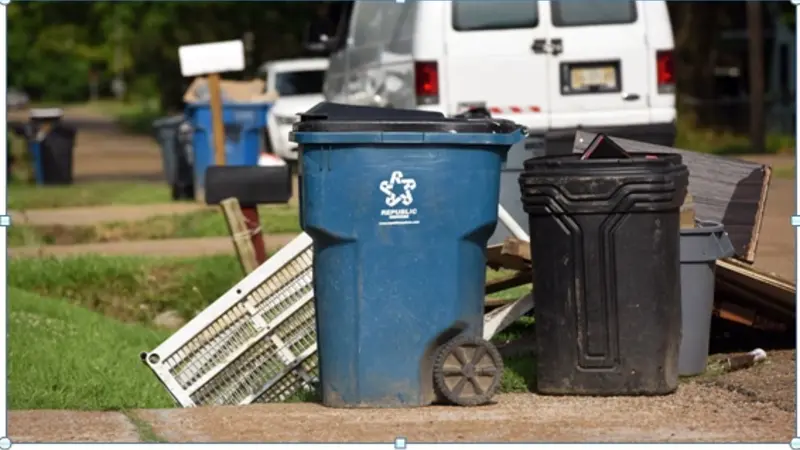One morning, I opened the trash can and paused. Not because it smelled (it didn’t) or because something gross had leaked through (it had). I waited because I noticed a pattern: it was mostly packaging. Plastic film from produce, wrappers from snacks, shampoo bottles, toothpaste tubes, and another empty lotion bottle. Nothing exciting, just stuff. Stuff I used, then dumped.
I stood there thinking, this isn’t even a full week. How does this pile grow so fast?
Becoming Aware
That’s when I started paying attention. I’m not saying you have to toss it all out and start from scratch. Just… awareness. I began noticing what came into the house and how quickly it left again. Cereal box—gone in four days. Plastic berry container—gone in two. Face wash tube—two months. Razor blade—a few weeks. And then there were the “extras,” the things I bought with good intentions that sat around untouched. Face masks, I forgot about them. Serums I didn’t need. Samples of products I already had full versions of.
At some point, it felt wasteful. Not just in a planet-hurting way (though that too), but in a “why am I spending money on things that disappear?” kind of way.
Making Small Changes
So I started experimenting—not with anything extreme, just tweaks. Little switches.I swapped my plastic dish soap bottle for a refillable glass one. I tried a unique kind of toothbrush. I started reading ingredient lists like they were tiny novels. And when my shampoo ran out, I finally gave in to all the people online talking about bars.
Let me just say, I had major doubts about a zero-waste shampoo bar. My hair is picky. Like, frustratingly picky. Some products make it frizzy. Some just make it feel like I rinsed with pancake batter. So the idea of rubbing a bar directly on my scalp felt… wrong.
But I tried it anyway. I got one that was supposed to be gentle and moisturizing. It didn’t foam much. I wondered if it was doing anything. But when I rinsed and dried my hair, it felt surprisingly normal. Not just “okay for a bar,” but good. Like, the same good I used to get from salon-brand liquids in sleek plastic bottles.
Here’s the thing nobody tells you: shampoo bars don’t fix your hair. They just don’t wreck it. Which is a huge win.
The Impact
That little bar lasted forever. I kept checking it, expecting it to vanish. It didn’t. Each time I ran it, the outcome looked exactly like the one before. Like a bar of soap that refused to die. Weeks passed. My bathroom shelf started to look clearer. Less clutter. Fewer bottles. And I didn’t miss them.
With fewer sales, the prep work shrank right along with them. Suddenly, I wasn’t handling 1/2-used products; I felt guilty about tossing. Everything I used had a place and a reason. My routine got faster. My trash can got emptier.
Discovering Alternatives
At this point, I got curious. What else was out there that didn’t come wrapped in three layers of plastic and branding? I started looking around. That’s when I found a package-free shop tucked a few neighborhoods over. Not a chain store, just a quiet space that looked like a cross between a bakery and a lab. Jars everywhere. Refill stations. People bring their containers, filling up on things like laundry detergent and olive oil, and dried mango.
The moment I stepped inside, an odd sensation washed over me. Like, I didn’t belong. I hadn’t a clue what each ounce was going to cost. I didn’t understand the system. But someone showed me around, walked me through how to weigh jars, how the pumps worked, and how you write the product codes down. No judgment. Just help.
A New Routine
I filled up on dish soap, grabbed a block of beeswax for reasons I still don’t fully understand, and picked up a deodorant that came in a compostable tube. It felt kind of like shopping in the 1800s. In a good way.
The best part wasn’t the products. It became the vibe. People were chatting, sharing tips, swapping recipes, and comparing notes on dry shampoo. No one changed into dashing. No one changed into scrolling. It felt human. Like how purchasing used to be—community-pushed, sluggish-paced, intentional.
I began going again every few weeks. It became a ritual. Not in a precious, performative way. Just something I did that felt good. No long receipt. No bright lights. Just what I needed.
Reflection
I’m not saying this lifestyle is for everybody. It takes an attempt. It’s no longer as speedy as one-click ordering. And now and again, yeah, I omit the benefit of grabbing something off a drugstore shelf and being carried out with it. But there’s something weirdly satisfying about looking at your bathroom shelf and knowing exactly what’s there, where it came from, and where it’ll go when it’s used up.
I don’t have a “zero waste” home. I still get Amazon boxes sometimes. But I’m not mindless about it anymore. I see the choices. And more often than not, I pick the one that makes less trash.
Because here’s the thing: less waste doesn’t just mean less plastic. It means less clutter. Less overwhelm. Less decision fatigue. It’s like a detox for your stuff. You stop buying “just in case” products. You start trusting that simple is enough.
And maybe that’s the real secret—this whole low-waste thing isn’t about being perfect. It’s about paying attention. Trying stuff. Messing up. Trying again. Finding joy in a product that works and doesn’t come with a side of landfill.
I never thought I’d care this much about what goes in my trash can. But here I am. Reading labels. Refilling jars. Washing my hair with a bar. Feeling oddly proud of my half-empty bathroom shelf. Click Here
